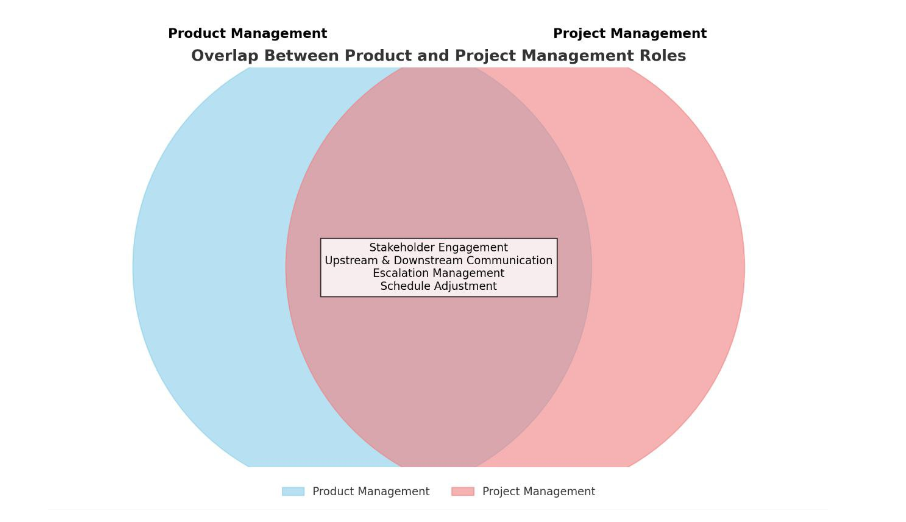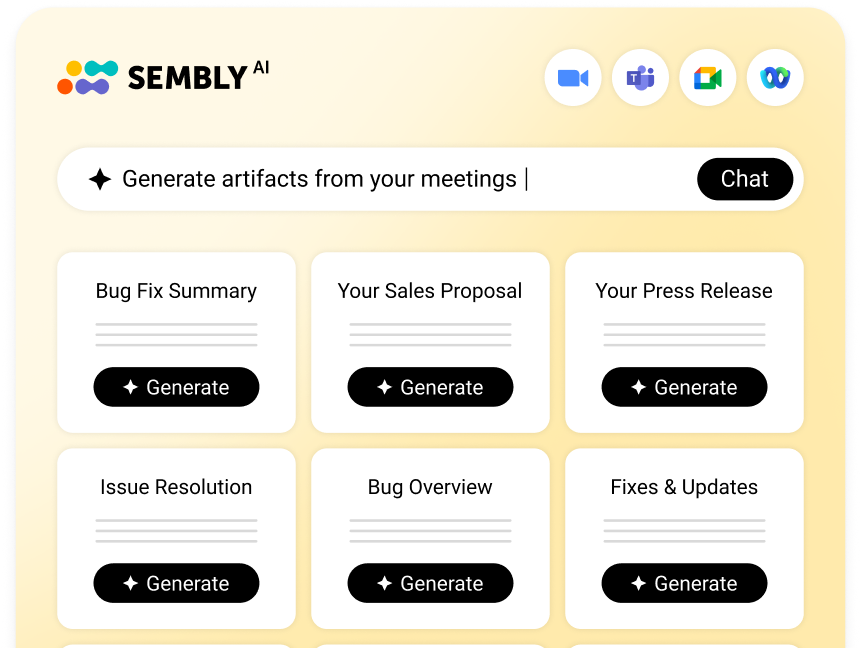Table of Contents
ToggleThe product manager vs. project manager dilemma has been concerning many businesses. While project management is vital in a company that has been driving results for many years, product management is a relatively new position, often creating confusion between these two. Many people use product management and project management terms interchangeably, thinking they share the same responsibilities and work scopes. In reality, these are different positions focusing on unique tasks.
What are these positions? What is the difference between a product manager and a project manager? What do they have in common? This article aims to illuminate the disciplines and explain their functions, responsibilities, and roles.
What is a Product Manager?
A product manager leads the product development’s entire lifecycle, from ideation, validation, prototyping, and designing to launching, perfecting, and retiring. Product managers are on top of the brand they represent, being a touchpoint between stakeholders, the workforce, and the target audience. They work tightly with each group to find the golden mean when it comes to building and featuring a product so that it ends up successful and long-lasting.
What is a Project Manager?
At its core, a project manager focuses on delivering a certain plan. They must compose a team, correctly utilizing the provided resources and establishing the project’s timeline. In other words, project managers obey the commands from above and act on a tactical level of operations, whereas product managers are strategic players, overseeing the product from its inception to its end.
Core Differences Between Product and Project Management

The core differences between product manager and project manager positions lie in purpose, focus areas, and success metrics. As mentioned, product managers make strategic moves, while project managers are more on the ground. What does it mean in a context? Let’s take a closer look.
Purpose and Goals
The product manager’s primary purpose entails researching the market, envisioning the potential of a product the company can create, and making data-driven decisions about what and how to build. Product managers must pay close attention to multiple aspects, especially business aims and objectives, measurable goals, and long-term results.
On the contrary, the main purpose of a project manager is to ensure a specific task (which can be one out of many for the given product–consider a mobile app update) is done perfectly. The goal is to receive and understand the task, create a time frame and teams, spread resources, ensure quality, and communicate the progress to product managers and other stakeholders.
Focus Areas
The width of focus areas depends on a particular business trajectory, thus increasing or decreasing the list of things product managers and project managers are responsible for. However, most companies focus on these areas:
- Product managers:
- Vision and strategy: Aligning the product’s long-term goals with business objectives.
- Customer understanding: Comprehending user needs, market trends, and competition.
- Product roadmap: Developing a roadmap to deliver value and meet strategic goals.
- Cross-functional collaboration: Working with diverse teams and being inclusive.
- Lifecycle management: Overseeing the product development throughout all the stages.
- Project managers:
- Scope management: Defining and managing the boundaries of the project.
- Planning and scheduling: Developing detailed project plans and milestones.
- Resource allocation: Optimizing the use of project team members, budget, and tools.
- Risk management: Identifying, preventing, assessing, and mitigating risks.
- Communication: Updating project stakeholders on the progress and roadblocks.
- Execution and monitoring: Completing projects by established deadlines.
- Delivery and closure: Finalizing deliverables and improving the approach for the future.
Metrics for Success

Metrics for each position’s success depend on many variables because neither role operates in isolation. While product managers work internally and externally, the metrics pertinent to this position’s success will include customer satisfaction, ROI, and engagement (subscriber growth, time on site, product adoption, and churn).
Assessing project managers is easier in this case, as they follow the orders and deliver the job they’ve been tasked with. Their success might be evaluated based on proper scheduling, productivity, employee satisfaction, timed and controlled quality assurance, and impeccable stakeholder communication skills.
The key difference is that project managers can’t be blamed if the task doesn’t pan out (although executed perfectly), as they haven’t established strategic objectives in the first place; this is purely on product managers.
Overlap Between the Roles: Product and Project Manager
At this point, it’s clear that the competition between the so-called product manager and project manager is, in reality, a synergy essential to drive product success. Although the roles encompass different skills (see the section below), there’s still an overlap, but it isn’t imminent, i.e., it doesn’t occur during each product management and project management lifecycle. Still, it has a high chance of happening and thus must be transparent and efficient.
Usually, this overlap touches upon stakeholder engagement, upstream and downstream communication, escalation management, and schedule adjustment. This communication, organization, and presentation require a proactive approach from both professions, leading to fast conflict resolutions and alternative ways to find effective workarounds without affecting a long-term company strategy.

Key Skills Comparison Product vs Project Manager
Product managers and project managers play complementary yet distinct roles. Product managers focus on defining the product vision, strategy, and lifecycle, ensuring it meets customer needs and business goals. Project managers, however, are responsible for task execution, delivering projects on time, within scope, and on budget. Below is a table that highlights the key skills for each role:
| Skills for Product Managers | Description | Skills for Project Managers | Description |
| Technical knowledge | Deeply understands enough technology to collaborate with engineering and development teams, assessing feature feasibility. | Timeline management | Creates and manages project schedules, ensuring milestones are met on time. |
| Marketing and sales skills | Aligns the product with market needs, drives positioning, and supports sales enablement strategies. | Scope creep management | Defines and enforces project scope to prevent unplanned changes that disrupt progress. |
| Critical thinking and prioritization | Evaluates customer needs, business goals, and resource constraints to prioritize product features. | Coordination across teams and removing roadblocks | Coordinates team efforts, resolves bottlenecks, and ensures smooth project execution. |
| Product domain expertise | Solid industry knowledge and user problems to inform product decisions and strategy. | Issues and risks mitigation | Identifies, mitigates, and monitors risks that could impact project success. |
| Business communication | Communicates product vision and strategy and updates to stakeholders, customers, and teams. | Financial tracking | Monitors project budgets to ensure spending stays within financial constraints. |
For those looking to advance their careers or transition into these roles, having a polished resume is essential. Using tools like the resume templates by Rezi can streamline this process, helping you craft a standout resume that captures your skills and experience to attract recruiters and hiring managers.
Responsibilities of a Product Manager

Product managers engage in a wide array of tasks that can build quite an extensive lifecycle. From rigorous research to product launches, the amount of responsibilities varies depending on factors and business goals, but they can be compressed into the following three building blocks:
Strategic Planning
The first stage involves interviewing, surveying, and conducting as all-embracing research as possible. This study includes the market, customers, and competitors to find out whether there’s a problem a potential product can tackle, driving long-term profit to the company.
This strategic thinking and planning aim to build a comprehensive product vision and pricing strategies for further stakeholder communication.
Stakeholder Engagement
As the product vision document is composed, a product manager takes it to the board to present and describe a product idea. This is important to ensure that all possible scenarios, concerns, and issues voiced by stakeholders are addressed during product initiatives. Once the idea gets approved, a product manager must communicate the framework to provide the board with a ballpark figure for required resources and ROI across the product lifecycle.
Lifecycle Management
Next, the product manager creates a strategic and comprehensive lifecycle management plan, including product roadmaps, sprint planning documents, feature prioritization summaries, and other crucial notes. They must also generate task models for project managers, describing product goals and outlining the budget for each stage. The lifecycle management process requires constant research, product backlog tracking, ruthless prioritization, and reporting.
Responsibilities of a Project Manager

Project managers have a more narrowed list of responsibilities, but it does not demean their role. Project managers receive certain tasks for completion as the product lifecycle goes underway. Similarly to product management, project management focuses on these three responsibilities:
Task Execution
A task execution phase begins with a professional fully comprehending the objectives, limitations, and other crucial aspects related to the main assignment. Typically, a project requires analyzing and breaking it down into several stages to create effective workflows, bring relevant teams, and allocate resources.
Upon completing organizational matters, a project coordinator must establish deadlines and define team goals with milestones for improved efficiency, reporting, and risk management.
Timeline Management
As the project execution begins, the manager serves as a mediator and supervisor, checking in on project progress, interfering, and fixing problems when needed. They must monitor workflows, communicate with diverse team members and stakeholders, and provide status and update reports. Open and active information exchange pipelines enable them to maintain an efficient work pace, preventing the progress from slowing down.
Risk Mitigation
Mitigating risks is essential in managing projects, even though managers are doers and don’t influence a product strategy. A manager must identify potential risks at the onset of a project, alleviating issues related to scope, resources, budget, or external factors like market conditions. Staying vigilant and adaptive helps project deliverers adjust to changes and meet new requirements. Assessing each risk’s likelihood and potential impact also helps prioritize which issue poses a threat and needs immediate attention and which can fade away without impulsive intervention.
Tools Used in Product Management vs Project Management
There are some differences between product management and project management in terms of tool choice, given the strategic and tactical nature of each position. Product managers utilize software that can compress large amounts of information into cohesive visuals and presentations for further sharing with stakeholders. They help gather information regarding the company’s strengths, pain points, offerings, and capabilities, comparing them with the market situation to find the best strategy for a potential product idea, design, and rollout.
Sembly AI is one software solution that stands out in product management. With Sembly, product managers can communicate efficiently with colleagues, shareholders, and subordinates, presenting plans, brainstorming ideas, and thinking strategically within one secure ecosystem.
As project managers pick up a previously outlined task by product managers, software selection must empower them to execute any task successfully. This includes creating workflows and workstreams for seamless cross-functional cooperation. These tools help managers track deadlines, subtasks, and emerging issues to ensure the project doesn’t derail from the set course.
While both positions typically stick to different tools, they can overlap. Sembly AI can become a go-to software solution for both roles. Its state-of-the-art AI-powered assistant, Semblian 2.0, provides valuable artifacts relevant to any work scope, whether a project schedule, task assignment sheet, or a specific status report.
Sembly and its newest Semblian 2.0 assistant offer a holistic approach to any business task, attending and recording meetings, providing deep analyses, and giving industry insights. Choosing the right tool is essential for product managers and project managers, and that’s where Sembly AI can enhance your tactical and strategic planning with execution.
Challenges in Product vs Project Management

Project managers and product managers face challenges and hiccups that can impact effort efficiency, quality, and success. Below are some of the most common problems in these areas.
- Product management challenges:
- Defining and prioritizing product features. It might be difficult to determine which features or improvements will provide the most value to users and align with the business goals. Experts must balance customer feedback, market research, and stakeholder interests to ensure the aims and objectives agree with each aspect.
- Keeping up with fast-paced markets. Achieving and maintaining product-market fit is a continual challenge, especially now as the digital landscape is overcrowded. As industries evolve, consumer preferences shift, and new competitors emerge, managers must stay agile, constantly iterating, testing, and sometimes even pivoting ideas and products in progress.
- Leading leaders. Managers bring product teams together, and these are usually well-performing, experienced, and aspiring individuals. Finding the right way for each person can be tricky, especially regarding cross-functional collaboration. Clear, tailored, and efficient cooperation is a top priority to keep the product on track and deliver long-term value.
- Project management challenges:
- Scope creep. Adding new objectives, features, or deliverables on top of the existing (and required) ones is a typical challenge for project handlers. This can occur in various ways, but managing scope creep with strict project governance, accurate documentation, and stakeholder updates is essential to ensure the project doesn’t go off the course.
- Team alignment and morale. Keeping the team motivated and on the same page can be taxing, primarily when the project is lengthy and multifaceted. Inconsistent communication seems to contribute the most to lower morale, with goal misalignment and role blurring following it. Building efficient workflows and streamlining projects with workstreams can empower teams.
- Project interdependencies. Different tasks have different dependencies, which project experts must tackle seamlessly. Failing to do that can lead to delays in one area, causing a domino effect on all project assignments. Managing requires in-depth scheduling, proactive communication, and anticipating and resolving bottlenecks as quickly as possible.
Role of AI in Product Management and Project Management

Artificial intelligence has been instrumental in project and product management. There are various ways to implement AI in these positions, with new methods emerging now and then. The best thing about AI-powered tools is their flexibility; project managers and product managers can twist AI assistants in many ways to ensure they deliver positive results.
AI-driven software already plays a critical role in:
- Decision-making and prioritization by assisting product managers in prioritizing features or tasks and analyzing feedback, trends, and data.
- Analyzing customer feedback and streamlining the analysis accumulated from different channels, such as social media platforms, online surveys, and reviews.
- Roadmap and vital document creation, assisting product managers and project managers in creating roadmaps, reports, analyses, and more.
- Automating routine documents, such as scheduling, task assignments, progress tracking, meeting minutes, and summaries, freeing up time for more demanding tasks.
- Communication, featuring reminders, action items, follow-up queries, and providing updates on different topics.
These are just a few areas in which AI has proved valuable for product and project managers. As time brings new solutions and features, businesses have yet to discover creative ways to improve their task execution, interpersonal skills, data analysis, and overall productivity.
FAQs
How does a product manager differ from a project manager?
A product manager defines the product’s vision, strategy, and goals. They focus on customer needs and business outcomes, guiding the product from the beginning until the end. A project manager ensures efficient execution by managing tasks, timelines, and resources to deliver specific objectives. These can be an upgrade of an existing product or part of a product being created, like a particular feature.
Can a product manager also be a project manager?
Yes, a project manager can become a product manager, especially in smaller teams, but it’s not ideal. Combining roles can scatter focus, as product management requires strategy oversight, while project management is about working on a tactical level, executing separate tasks that are part of a more significant project.
Which of these roles require technical prowess?
Product managers need technical knowledge to assess feasibility and find a way to reach engineering and sales teams effectively. It’s recommended that both product and project managers have technical proficiency in tools and processes for effective planning, execution, and delivery.
- Multi-meeting chats
- AI Insights
- AI Artifacts


